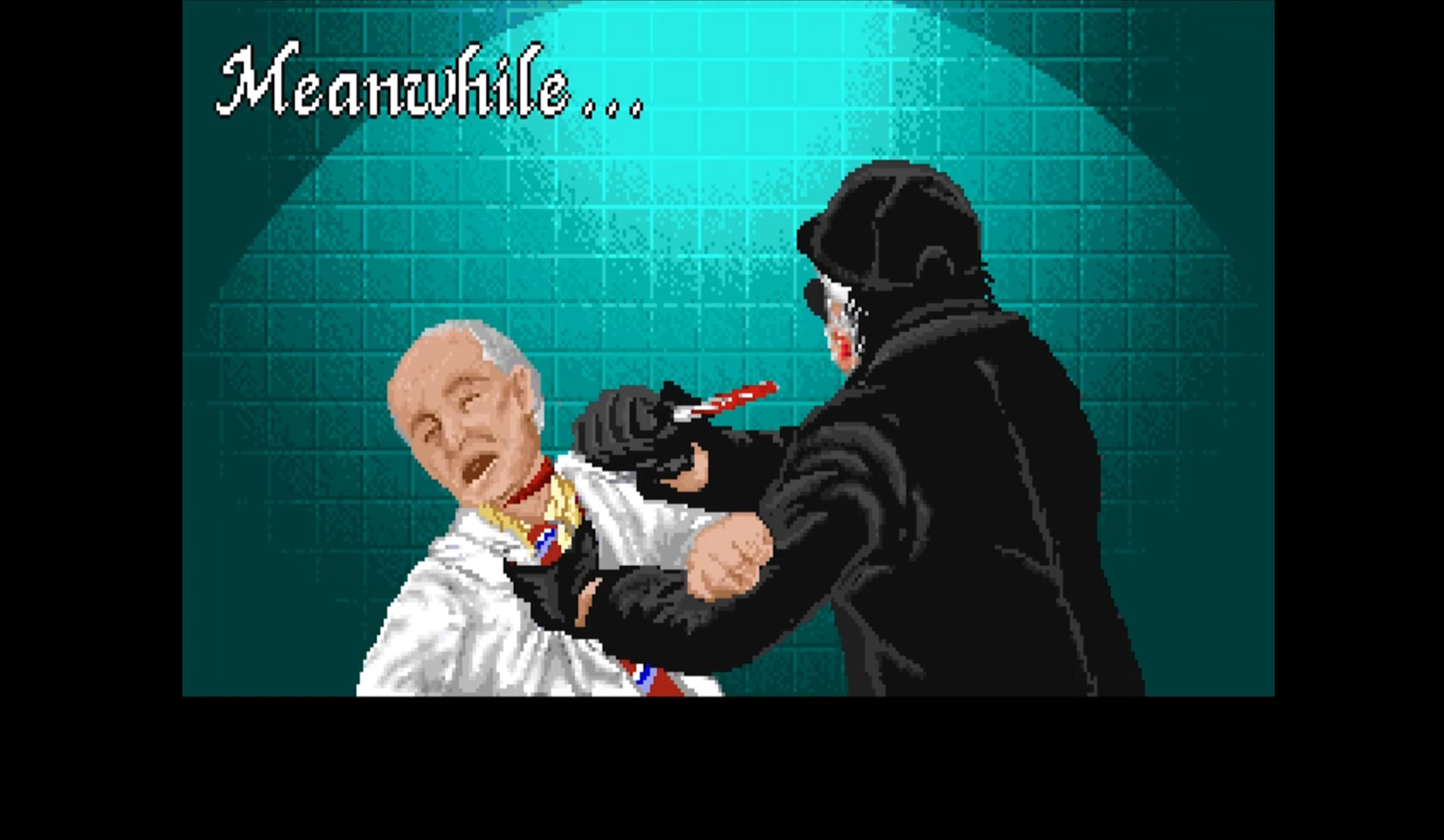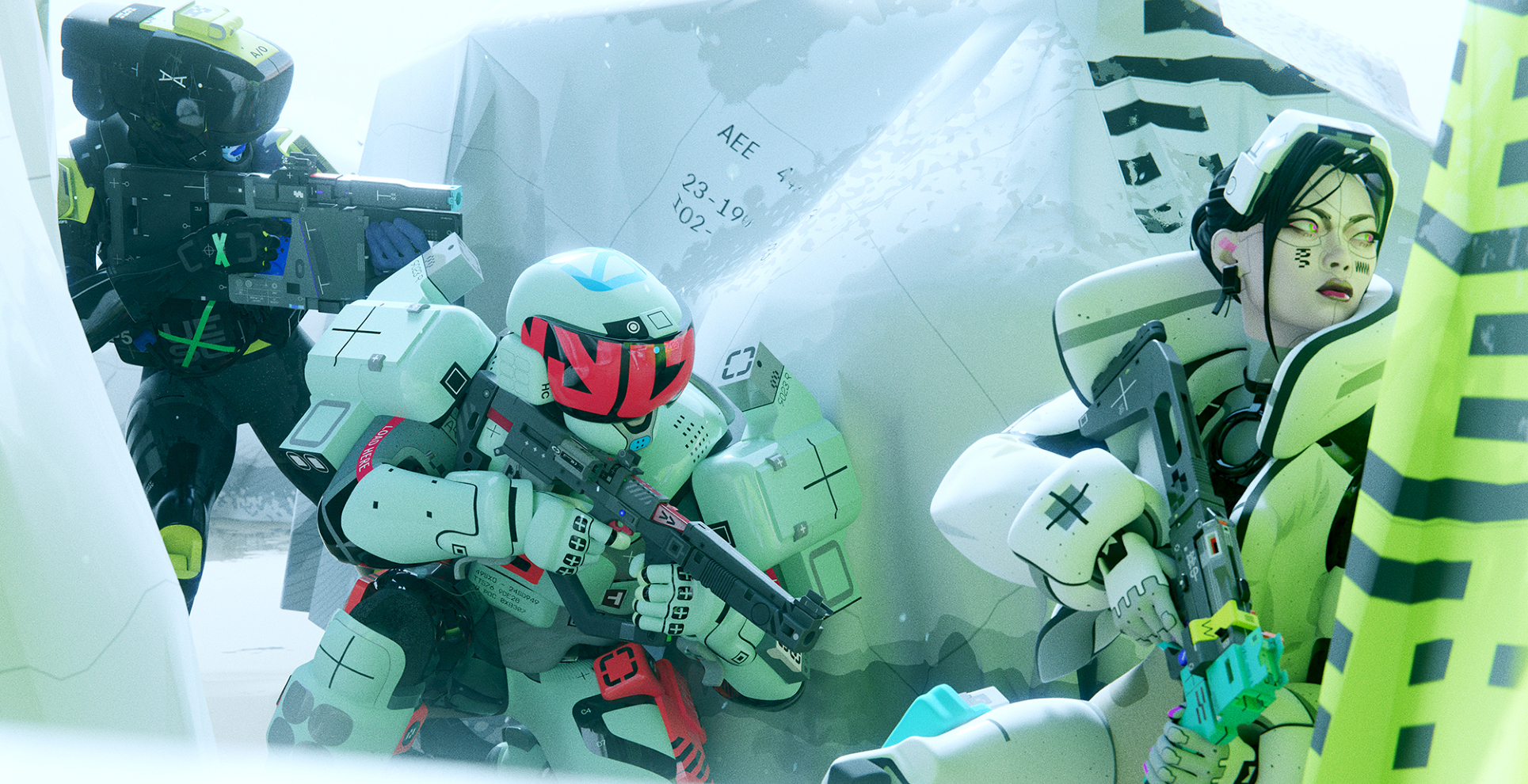Hyper Light Breaker creator on reimagining the series as a 3D roguelike: ‘I don’t think that you could really release Drifter today and get the same sort of success’

“They’re games of their time,” Heart Machine head and Hyper Light series creator Alx Preston told me of the two games in the series, 2016’s Drifter and the upcoming open world roguelike, Hyper Light Breaker (opens in new tab). “I don’t think that you could really release Drifter today and get the same sort of success it had.”
That first game is a 2D, top-down hack and slasher, reminiscent of classic Zelda but with a harsher edge and a striking neon aesthetic. Its desolate world could be by turns cute and hopeful but also horrifying and gruesome, and to my eye presaged later indie hits like Hollow Knight or last year’s Tunic. I love Hyper Light Drifter (opens in new tab), and when developer Heart Machine revealed its plan to follow it up with a fully-3D, open-world roguelike, I was intrigued but apprehensive.
“We have a lot of ambition to keep building up stuff and doing bolder games as we go,” Preston said of the shifts in genre and perspective. “[Drifter] was a great first outing for us to just learn about putting a whole game together in a finished package that felt cohesive, that had a particular voice to it. And then [Solar Ash (opens in new tab)] really gave us a lot of value in exploring 3D, more open spaces, and the value of perspective that we didn’t have before.”
You never see the same world again once you die, or once you complete it.”
Alx Preston
Watching early gameplay (opens in new tab) of Hyper Light Breaker, there’s a distinct continuity with the first game, not only with the colors, character designs, and music, but also with the animations and flow of combat, which look like a faithful translation of how the first game felt. “It’s not too different from what you’re doing in Drifter where there’s a lot of group combat with common enemies,” Preston explains. “It’s an extension of what we were doing in Drifter while referencing other modern games that have done it well in 3D.”
While nailing that Hyper Light vibe was key, Preston also touched on other games in the interim that have had an impact on Breaker’s design. “We talk a lot about Platinum Games—NieR Automata is a key reference as well. Our combat falls a little more in line with NieR than it does something like Souls where you’re tackling more enemies one on one.”
Free roam
Apart from combat, a key pillar of Hyper Light Breaker is going to be exploring its procedurally generated open worlds, with Preston first quipping, “We went that direction because we’re lazy devs that hate level design, of course.”
The developer stressed that “you never see the same world again once you die, or once you complete it,” and that the team was compelled by this notion of producing open world environments that were ephemeral and unique: “That was a fascinating idea for me that I couldn’t get out of my head for a long time.”
In addition to having these vast environments, Preston said that Heart Machine wants to incentivize exploring them, to make exploration “as attractive as making an interesting build, scouring the area for secrets and hidden stuff in the world, or just finding the next good thing over here rather than it just appearing in a treasure room.”
“I just wanted to explore that avenue in a run-based format and see if we could really mix in that sense of exploration and discovery in an otherwise very combat heavy genre,” Preston went on, and while Breaker will incentivize discovery, it will also have familiar roguelike pressures to keep you from luxuriating like you would in Elden Ring or Breath of the Wild.
Exploration, Preston explained, “has limitations, and maybe it will lead you into a bad spot where you wipe out. Ultimately, a lot of decisions going into the design are to balance these factors out: exploration versus the pressures of the roguelike.”
Drifter, I wrote that stuff and thought about those things and created that game in a much darker time, personally.”
Alx Preston
“We have a day night cycle in the game, and that ends up providing some pressure because the world gets angrier as you go,” Preston told me of the game’s constraints. When I compared it to Risk of Rain, he elaborated: “It’s a little more akin to a battle royale game where the circle is closing. We don’t have a circle closing because that’s not the point here, but we do have hazards that span across the world more frequently and enemies that get more powerful overnight, so the world will get more dangerous the longer you stay there.”
In between those runs into the ever-changing open worlds, Breaker seems set to offer a familiar form of meta progression: “If Spelunky is on one extreme end of meta progression where it’s basically like, ‘Fuck you, there is none,’ while Hades is on the other end of the spectrum, where it’s like, ‘Oh, yeah, there’s tons of stuff that you can permanently do and affect and bring back,’ I think we ride a little bit more like center-Hades.”
You’ll also progress storylines with various NPCs who, similar to the first game, will speak only in cryptic symbols. Hyper Light Breaker will be dialogue-free, something Preston believes is “an important aspect to the vibe of a Hyper Light world in general.”
Pre-pre alpha
The game’s roots go farther back than its 2022 announcement might imply. “Breaker itself had some early prototypes way back when in 2017 that I was working on with another person internally, but it was in our old Drifter engine in GameMaker.” Preston revealed. “It was a roguelike, something like [the current build] but much more limited. We shelved it for a while because it didn’t feel like that was the right format for it.”
I was immediately curious about what might have endured since those first furtive prototypes six years ago, and Preston confided, “There was a hammer. Always wanted a hammer, that definitely stayed.”
“There are some threads that carry through like the hammer and other ideas about how procedural worlds would work and a bit more of an open structure,” Preston continued. “Even that 2D version was a little more open than not. But again, pretty big format shifts. Character builds and the type of weaponry and enemies that you would encounter stuck around, but the general structure of the world evolved a lot over time.”
One thing that’s struck me about Hyper Light Breaker so far is that it seems like a more optimistic story with a more lively world, but Preston cautioned, “I don’t think you’ll be disappointed with the amount of death in this game.” In response to my query about the world being “on its way out,” Preston explained, “It’s less about the world being on its way out, and has always been more about society being on its way out. The world is gonna be fine.” He pointed to images in both games of settlements being retaken by nature, and compared it to our own potential doom with man-made climate change—barring some true excesses by humanity, the biosphere will bounce back someday, with or without us.
That being said, Preston acknowledged a generally more optimistic turn in Breaker: “This one has a bit more of a hopeful message and initial thread to it. You know what you’re doing, which is trying to help other people and reestablish some form of society, even in the face of great catastrophe.”
“Drifter, I wrote that stuff and thought about those things and created that game in a much darker time, personally. I think that shines through, or rather shadows through in the story, the world, and the aesthetic.”
Hyper Light Breaker is currently slated to release into early access this fall, and you can wishlist the game on Steam (opens in new tab) to follow its progress.




